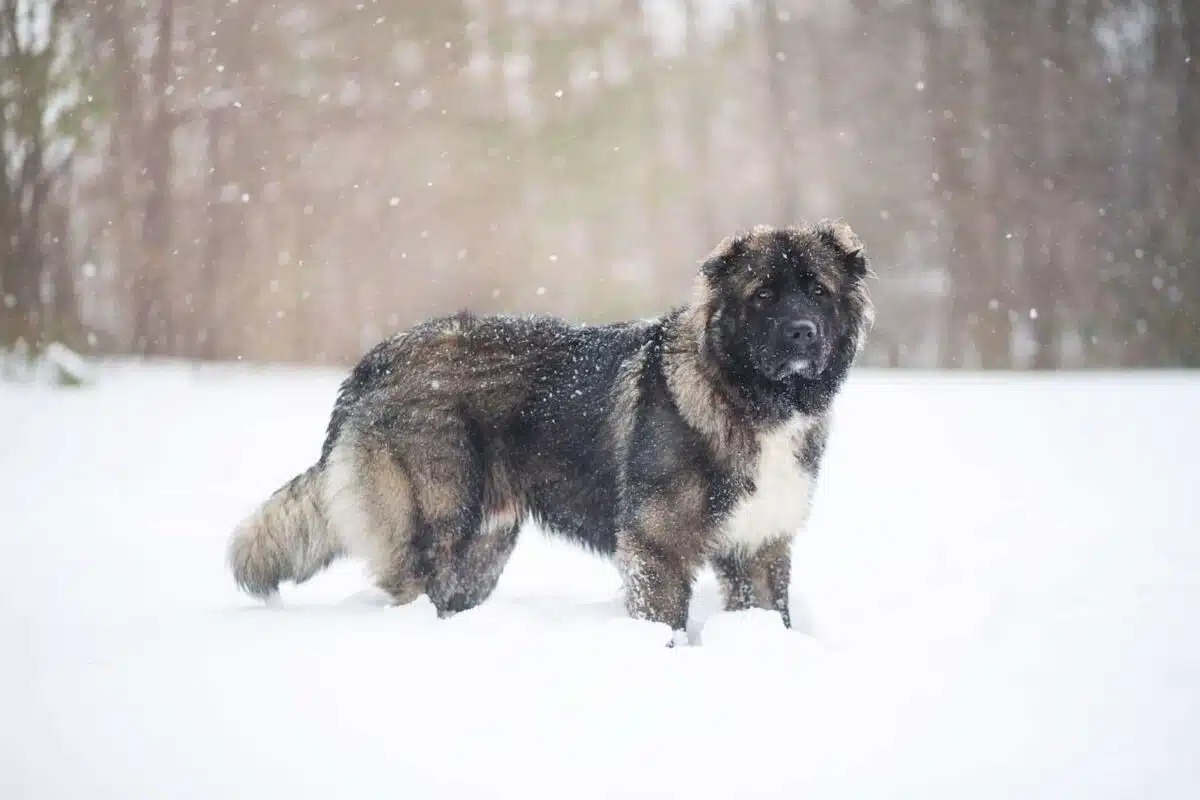Don’t be fooled by the different names – Russian Bear Dogs go by many monikers, including Caucasian Shepherd Dogs and Caucasian Mountain Dogs. But let’s set the record straight: these colossal canines are a breed apart from the King Shepherd and the Shiloh Shepherd, two breeds often mistaken for them.

They are also registered as the Caucasian Ovcharka in the United Kennel Club (UKC) and as the Caucasian Shepherd Dog in the American Kennel Club (AKC).
The specialty of these dogs is their majestic size, fur, and reputation for being super protective. Due to their massive size and heavy fur, they look like a perfect cuddle buddy, but their protective natures make it uncertain whether these are pet-friendly dogs or not. Allegedly, they are one of the riskiest pets.
To find an exact answer to this question and to learn more about this unique dog breed, keep reading this article as it explains everything about Russian Bear dogs, from their physical appearance to nature, habitation to temperament.
An Overview of Russian Bear Dog
Before delving further, let’s briefly overview this particular dog breed.
| Common Names | Russian bear dog, Caucasian shepherd dog, Caucasian mountain dog, Caucasian ovcharka dog |
|---|---|
| Origin | Southern Russia, Caucasus |
| Breed Group | Working dog |
| Height | 23–30 inches |
| Size | Large |
| Weight | 99–170 pounds |
| Colors | Brown, gray, black, cream, white, brindle, fawn, apricot |
| Nature | Intelligent and easy to train |
| Coat | Double coat, medium-to-long length |
| Life expectancy | between 10 and 12 years |
| Temperament | Loyal, alert, aloof, energetic, confident, protective |
| Shedding | Heavy shedders |
| Barking tendency | Moderate |
| Cost | $1,200–$3,000 |
History of Russian Bear Dog
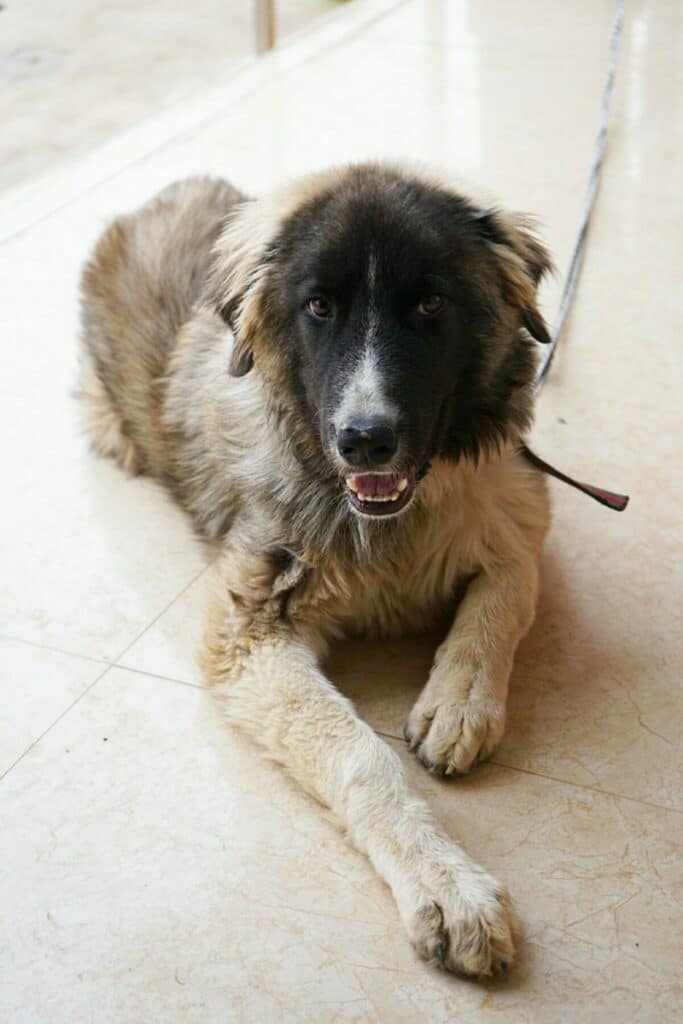
The Russian Bear Dogs were used as working dogs or working companions of humans. Typically, these dogs protected flocks of sheep in the region from large predators, e.g., bears, wolves, and jackals. They have also been used to protect homes and other livestock. It’s all because Russian Bear Dogs are famous for having powerful protective instincts.
It is vital to note that these dogs did not herd sheep. Instead, they just protected them since they were bred alongside sheep to develop an affiliation with them. Moreover, these giant-sized dogs were first known as ovcharka dogs. Later on, they got their new name, Caucasian Shepherd Dogs, as they had been used as working companions of shepherds.
In 1920 the Soviet Union started breeding this dog to protect government facilities and factories due to their protective instincts, canine ferocity, and loyalty. That’s how this dog breed finds its way from the Caucasus Mountains to regions around Russia, Georgia, Azerbaijan, Germany, and other areas of Europe.
1930 was when they first started appearing outside of the Soviet Union, in Germany, as guard dogs. Ever since, these dogs have gained popularity and demand for being used as bear-hunting dogs, prison guards, and even pet dogs. The Federation Cynologique Internationale officially accepted this breed in 1984.
Today, the dog breed is known worldwide and used as companion dogs, watchdogs, and property guardians. Moreover, shepherds are still using them to protect their sheep flocks.
Russian Bear Dog Appearance
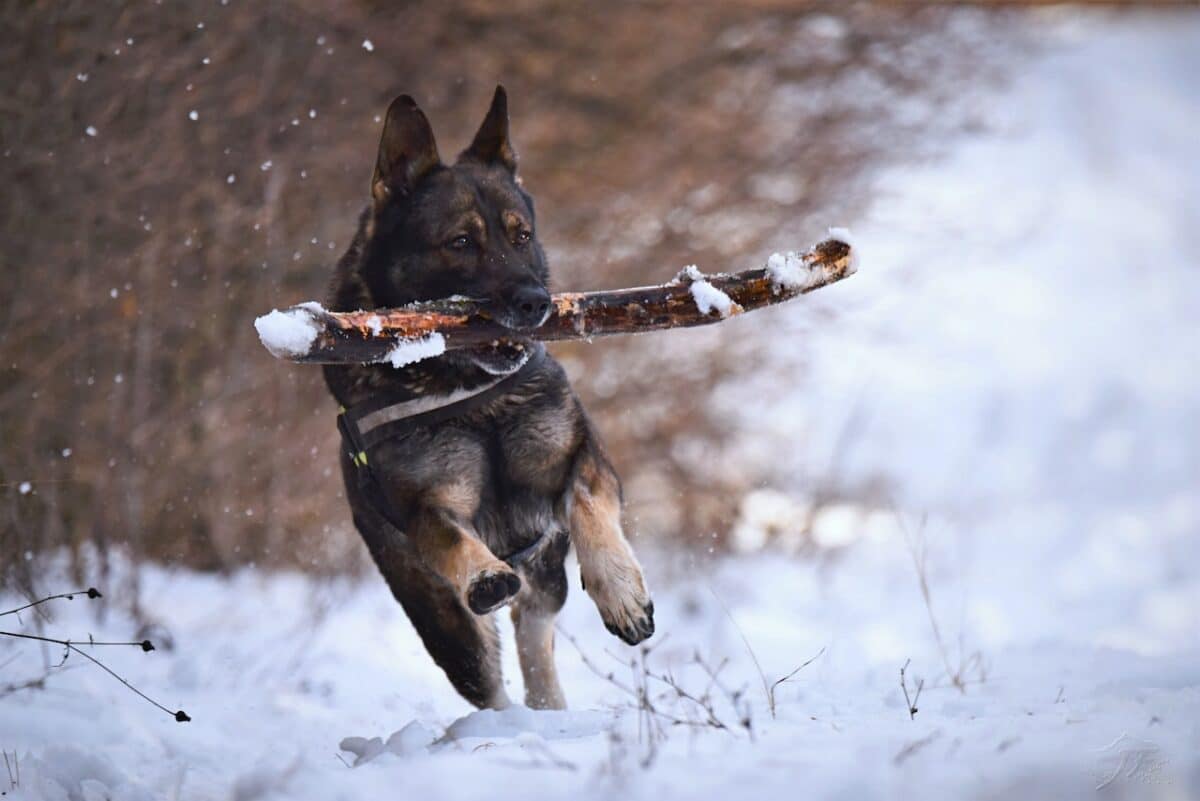
Overall, Russian Bear Dogs have a muscular and robust appearance, making them the perfect opponent of giant wolves. Their massive size, strong body structure, thick coat of magnificent fur, and facial features create a primal impression – indicative of their protective instincts.
Moreover, we have briefly outlined each physical attribute of Russian Bear Dogs below:
1. Size and Weight
The size of Russian Bear Dogs is as big as small-sized bears, which attributes them an intimidating figure. It is thought that these dogs were bred to be big, robust, and strong enough to fight wolves and other predators.
Their size varies significantly depending on their gender. Approximately their height ranges from 20 inches to 30 inches. Also, the female dog is slightly shorter than the male dog.
Moreover, the dogs of this particular breed pack a lot of muscle, making their body robust and athletic. Approximately the weight of these giant-sized dogs ranges from 99–170 pounds. Besides, it is vital to note that the size and weight of dogs also depend on certain factors, including gender, diet, activity level, and parents’ height.
Interestingly, in 2018, British newspapers featured a Russian Bear dog named Fluffy, who weighed 100 lbs at just ten months old. Also, she was expected to double her weight in a few months, equivalent to a female trigger in weight. Unfortunately, the source did not reveal the leading factor to her extreme weight gain.
In a nutshell, the Russian bear dogs are one of the biggest dogs to ever exist.
2. Coat & Colors
Like their sizes, their coat and color are also distinct from other dog breeds. Its coat is fluffy, and as far as the color is concerned, you will see a vast variation, including white, gray, cream, black, fawn, apricot, or rusty red-brown shades. However, the most common ones are in combination shades. White, black, or brindle is the most common combination color of their coats. Moreover, Russian Bear Dogs with solid-color coats are typically rare.
This dog breed has a dual layer of magnificent fur, including a soft underlayer covered with a coarse outer layer. The double layer of the coat serves two purposes. Firstly, it helps them withstand extreme icy temperatures and keeps them warm. Secondly, it protects them from injuries during fights with wolves – or other impostors, for that matter.
If you were planning to keep one as a pet and got slightly demotivated due to their heavy shedding, know that they are hypoallergenic. Moreover, you can adjust their fur length depending on your preferences. You can let them have long, medium, or short hair depending on your likes and dislikes.
3. Head and Facial Features
Their head and facial features are other distinctive attributes of this breed. They have broad faces with deep-set dark, oval eyes, a strong muzzle that tapers off to their nose, and sharp teeth that look like fangs. Their sharp and pointed teeth help them to tear the skin of predators and fight them.
Moreover, their ears used to be cropped to prevent predators from biting them. The American Kennel Club still practices it. However, many vets consider it an unnecessary practice.
Russian Bear Dog Temperament and Personality
No wonder people think these dogs are the most violent and aggressive dog breed considering their past work history. Even to this day, they are used as guardians or watchdogs due to their super protective instincts.
Following this, it is only natural to consider them as non-friendly dogs. But that’s not the whole truth about the Russian Bear Dog’s personality and temperament. The truth is they are active dogs. Their breed has a vast history of protecting sheep and livestock. For that purpose, they used to be bred along with sheep to get a sense of affiliation with sheep.
Also, it helped them to differentiate between predators and sheep. However, it exhibits their devoted yet protective nature. Simply, these dogs are loyal to their owners and fellow beings but a threat to strangers. We have discussed their personality in further detail below.
Personality
As previously mentioned, they are active dogs with instincts to protect and guard their owners. Overall, they have loyal, confident, and high-energy personalities. They are likewise known for their intelligence, alertness, and loyalty.
However, it is vital to note that training them is possible, but it is not easy. Their intelligence helps them to learn things faster, but their independence and alertness can distract them. Also, training and socialization help them to be protective without being aggressive or violent. Training won’t cease their protective instincts or aggressive nature but rather teach them to use them righteously.
For instance, shepherds used to breed these dogs to be calm around their flock yet violent to repel intruders or predators. Even now, Russian bear dogs are known to be calm and tend to cuddle with owners or family but are intolerant to strangers.
Barking
The best part about these dogs is their barking tendencies which are relatively low despite their protective guarding instincts. They only start barking when seeing strangers, sensing a threat, or other dangerous situations of which they want to alert their owners.
Socialization and active training in the dogs’ early age can stop them from barking at strangers or anyone who often visits your home. In short, unlike other dogs, this breed does not bark out of boredom or anxiety – another factor that makes them great pets.
Common Health Issues in Russian Bear Dogs
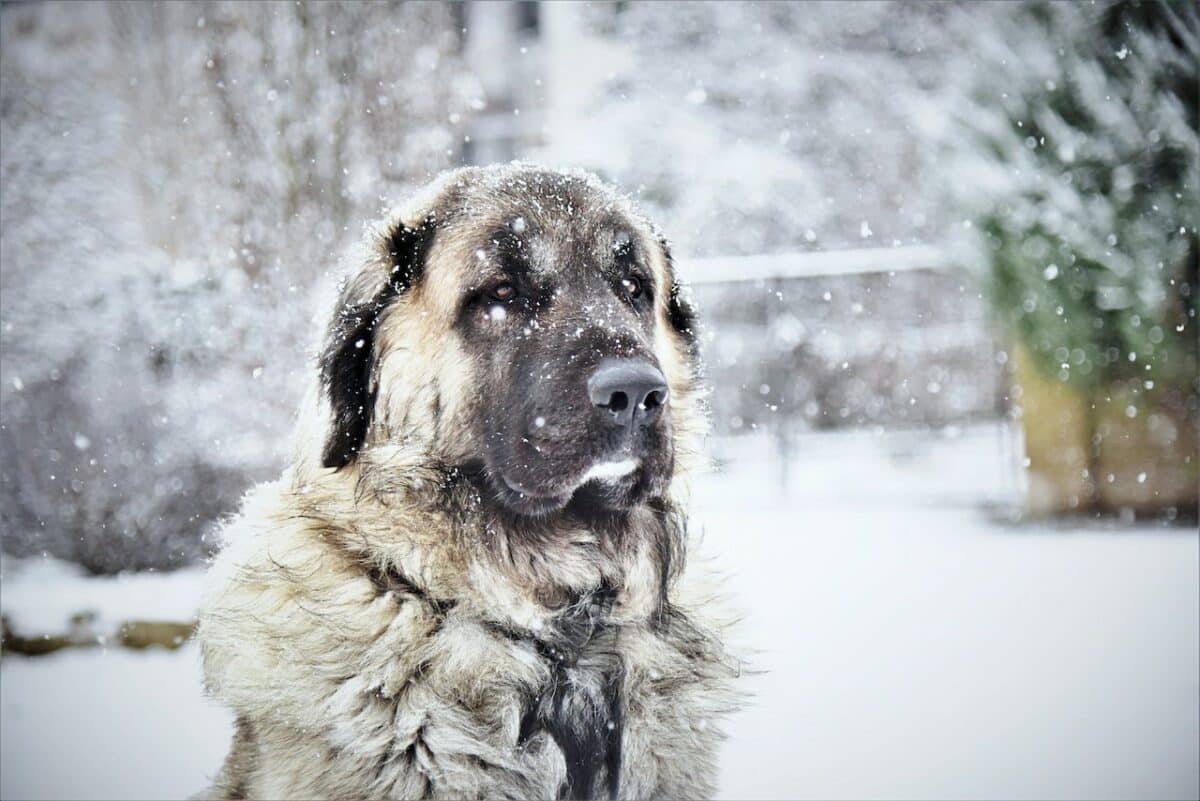
As discussed earlier, shepherds had mainly bred the breed to protect their flocks against giant wolves. It means they ought to be strong enough to compete with such a massive opponent. Therefore, Russian Bear dogs are healthier and more robust than other breeds.
Precisely, during a lifespan of 12 years, they do not face many unwanted health issues as the breed is counted as one of the healthiest dog breeds. Still, they usually are susceptible to three health complications they might face. These three complications are mentioned below.
1. Hip Dysplasia
One of them is hip dysplasia. Hip dysplasia is a common health problem in giant-sized dogs in which the hip joints become loose due to pressure on the cartilage or bone of the hip. The situation eventually starts causing dysfunction and pain.
Studies state that the most contributing factor to developing this health risk is overexercising at a young age. The best precaution is to avoid overexercising young pups. But it should not mean totally neglecting the importance of exercise. Ideally, a one-month-old pup should exercise for five minutes each day. Likewise, a four-month pup should exercise for 20 minutes a day.
Moreover, stiffness, difficulty moving, lethargy, irritability, and biting or scratching the joint are the most apparent signs of hip dysplasia.
2. Obesity
The second health complication is obesity which is common in giant-sized dogs. It mainly occurs due to a lack of exercise. Moreover, negligence in monitoring their diet and food also results in obesity. Pups or grown-up dogs who are at the edge of being obese should be put on a low-calorie diet.
In addition, they should exercise twice a day for at least 15 minutes.
3. Bloat
Ranked as the third most common health concern for Russian Bear Dogs, bloat, technically known as gastric dilatation and volvulus (GDV), is a serious digestive issue. This condition occurs when the stomach fills up with gas or fluid, wreaking havoc on the digestive system. Identifying bloat is crucial; look for telltale signs like a distended, hard belly, unproductive retching, excessive drooling, heavy panting, and restlessness.
Now, here’s a vital tip to minimize the risk: tweak their dining habits. Opt for several smaller meals throughout the day rather than a single large one, and incorporate exercise before and after each feeding session. Bear in mind that bloat is no joke for our furry friends; it’s a life-threatening condition that demands immediate attention and treatment, as it could even prove fatal if ignored.
Feeding Russian Bear Dogs
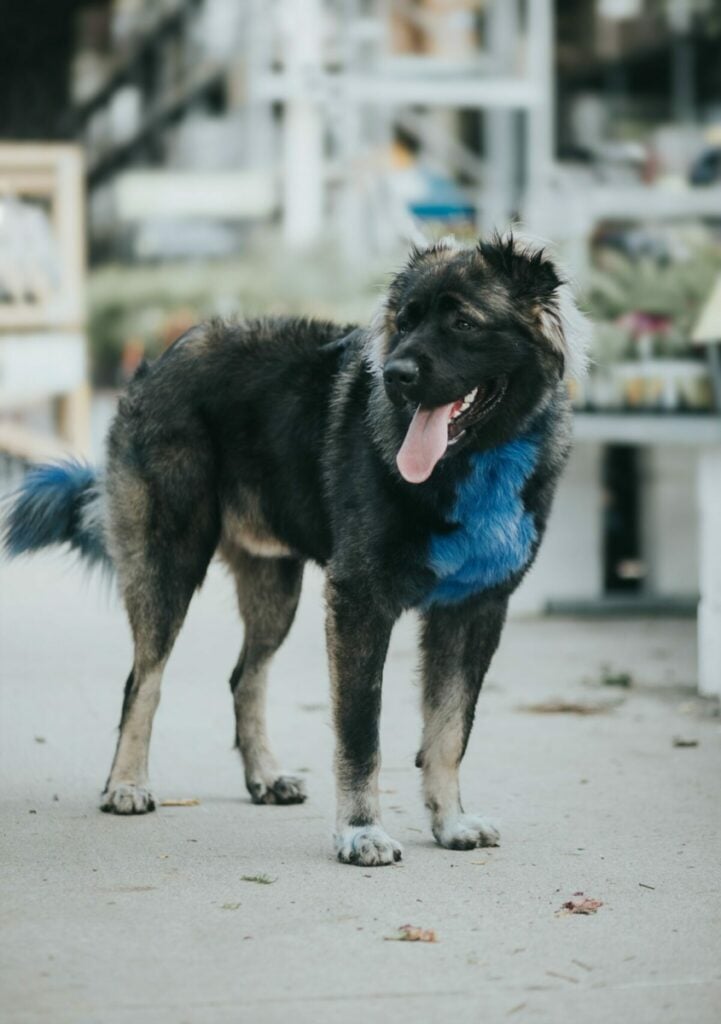
As far as the food of Russian Bear Dogs is concerned, they should have a diet enriched with lots of animal protein and healthy animal-based fats. Sticking with standard meat, e.g., chicken and beef, is also a healthy food option.
Moreover, make sure to provide them with quality food instead of quantity. It is vital to note that these giant-sized dogs are more prone to obesity, which is why giving them healthy, nutrient-dense, and high-quality food becomes more crucial. They may often develop problems with legumes, peas, and potatoes.
Just know that a healthy diet will prevent the risk of developing other health complications such as bloat, obesity, or other issues.
Should I Adopt a Russian Bear Dog as a Pet?
The Russian bear dog generally has a protective, loyal, and loving personality. They are intelligent, which means they are trainable. However, they are also stubborn, making their training slightly tricky. Moreover, these dogs are giant-sized animals that need proper diet, care, habitation, etc., so people who want to adopt them need to be mindful of their needs – and if they are capable of providing for such needs.
Before adopting Russian bear dogs, one should consider evaluating the following points.
- Where Do You Live?
Your place matters significantly in deciding whether to buy a Russian bear dog. It is because these dogs need to have a spacious place to roam freely. Experts believe that they do better in large homes. So if you are living in an apartment or small house without any fenced-off outside area, you should not think of adopting a Russian bear dog. Moreover, if you live in an apartment, they can cause problems for your neighbors as they are intolerant of strangers.
Therefore, this dog breed is suitable for people who have backyards where they can actively play or roam around, as they are one of the most energetic dog breeds.
- Are You An Experienced Dog Owner?
An important factor you must consider before owning these dogs is your experience. If you are a new dog owner with no knowledge of owning any dog, you need to reconsider your decision to own this breed of dog.
Because the dogs of this breed are stubborn, independent, and willful, a newbie dog owner may not be able to tackle their aggression or stubbornness.
- Pros and Cons of Owning a Russian Bear Dog
Lastly, it would be helpful to consider the pros and cons of owning dogs of this giant-sized breed.
Pros:
- Great guard dogs
- Beautiful and unique breed
- Loyal to their family
- Intelligent
- Moderate exercise requirements
- Generally healthy
Cons:
- Not for inexperienced owners
- Extremely aggressive toward strangers
- Not advisable for families with children
- Difficult to train
- Requires a large yard and high fence
- Regular grooming is a must
The Final Take

| Key Points |
| Russian bear dogs are giant-sized dogs who have been bred to accompany shepherds for protecting flocks of sheep. |
| They are formerly known as ovcharka dogs, and have been used by the Soviet Union to protect government offices and factories in the late 1920s. |
| Russian Bear Dogs have a muscular and robust appearance, making them the perfect opponent of giant wolves |
| They may face three common health issues, e.g., hip dysplasia, obesity, and bloat. |
| If you are thinking of owning a Russian Bear Dog, you need to consider three important factors, discussed in the article. |
To conclude, Russian bear dogs are the most loyal, energetic, and unique dog breeds. They were initially bred to help shepherds protect their flocks, home, and livestock. Later, they made their way to the Soviet Union due to their incredible protective instincts.
Despite their aggressive nature, many people love and own these dogs – probably because of their devotion and loyalty toward their owners.
Now you can consider yourself an expert on Russian Bear Dogs! If this interested you you will definitely love our piece on The Top Ten Ugliest Dogs.
- The Most Adorable Footage of Baby Wolves in Minnesota - April 15, 2024
- Man Teaches Bald Eagle to Play Fetch - April 15, 2024
- Mother Buffalo Tries to Save Baby From Komodo Dragons - April 14, 2024

